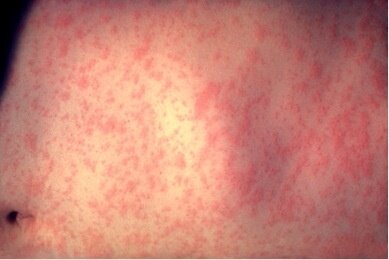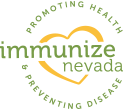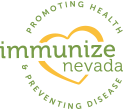Las Vegas Measles Outbreak: How to Tell if It’s Measles

Published 2-28-2015
The Southern Nevada Health District confirmed yesterday that they have identified three additional cases of measles in the Las Vegas area.
In the statement, the SNHD reports that, “…the cases, in adults under the age of 55, are considered to be the result of transmission from an under-immunized staff member at Emeril’s New Orleans Fish House at the MGM Grand Hotel & Casino earlier in February. The new cases are two staff members and a patron. The new cases bring to nine the number of confirmed measles cases in Clark County in 2015; these are the first confirmed cases in Southern Nevada since 2011.”
Given Nevada’s sheer proximity to California, epicenter of the “Disneyland Outbreak,” it should come as no surprise that measles is a widespread concern in our state. Measles is a serious disease that can cause pneumonia, seizures, brain damage and even death.
“We do hear from people who are concerned that they or someone they love may have measles,” said Immunize Nevada Executive Director Heidi Parker. “We feel it’s important to be a sound resource for the concerned public, so we wanted to take an opportunity to share some characteristics of the disease. Bottom line, however, is always to be in touch with your physician if you are concerned.”
Of particular note about the disease’s onset is how similar its symptoms are to those of a cold or flu. The characteristic rash of measles may not appear for three to five days after first symptoms, which according to the Centers for Disease Control (CDC) may include high fever, cough, runny nose and red, watery eyes (conjunctivitis).
Two or three days after these cold-like symptoms begin, tiny white spots (Koplik spots) may appear inside the mouth. And then, a few days later, a rash breaks out.
All of this means that those who contract measles may not know it for many days before suspecting the disease, which is part of the reason it spreads quickly in communities where there is an outbreak.
“People push through the cold symptoms, but then a few days later, see the rash,” Parker said. “So it’s important to be aware of what healthcare workers are looking for when they suspect measles.”
"Measles is a highly contagious illness and is circulating in the community," the Southern Nevada Health District noted in a statement. "The Health District encourages everyone to review his/her immunization status and get vaccinated if necessary.
"The risk of disease is low for persons previously vaccinated against measles or diagnosed with the disease," the statement continued. "However, due to the ongoing national outbreak, the Health District is alerting the community of the possibility of measles transmission so that Valley residents have an opportunity to receive measles immunizations and so that anyone who develops measles symptoms will seek medical attention."
So before a concerned Nevadan makes the leap too quickly and worries he or she may have measles, here are some summarized testing guidelines from public health experts:
- A healthcare professional will most likely not test if the patient has NO rash at all. However, they will most likely encourage a follow-up with the doctor later and monitor closely to see if a rash develops.
- A healthcare professional will most likely not test if the patient does NOT have a fever or if the fever onset was after the rash onset.
- Healthcare professionals will likely test for measles if a patient has symptoms of fever + cough + rash + runny nose + red and watery eyes (conjunctivitis). Note that the rash is an important indication and will begin two or three days after the cold-like symptoms begin. They will look for tiny white spots (Koplik spots) that may appear inside the mouth. The watery eyes will look similar to pink eye.
- Healthcare professionals will likely test for measles if the patient has a small febrile rash, which may begin three to five days after the cold-like symptoms begin. They will look for a rash that starts on face/head and then extends to the trunk and lower extremities. When the rash appears, a person’s fever may spike to more than 104°. A measles rash may be itchy from days 4 to 7, but NOT itchy immediately.
- Patients will likely be tested if they have had any contact with a confirmed measles case or if they have traveled internationally 21 days prior to a rash. Healthcare workers will also consider a test if the patient has potentially exposed others in sensitive settings (healthcare facility, childcare facility with infants or a neonatal intensive care unit) while potentially infectious.
“If you are worried that you have been infected with measles, you should contact your doctor immediately,” Parker said. “However the best peace of mind for yourself and your family is to ensure you are all up-to-date on your MMR vaccinations.”
Nevadans can check immunization status online here, or by calling the Health Department or their doctor.
For more information about measles, please click here. Also, please follow Immunize Nevada's Facebook page, where we're posting updates on the Clark County outbreak and other vaccination info.




Add new comment